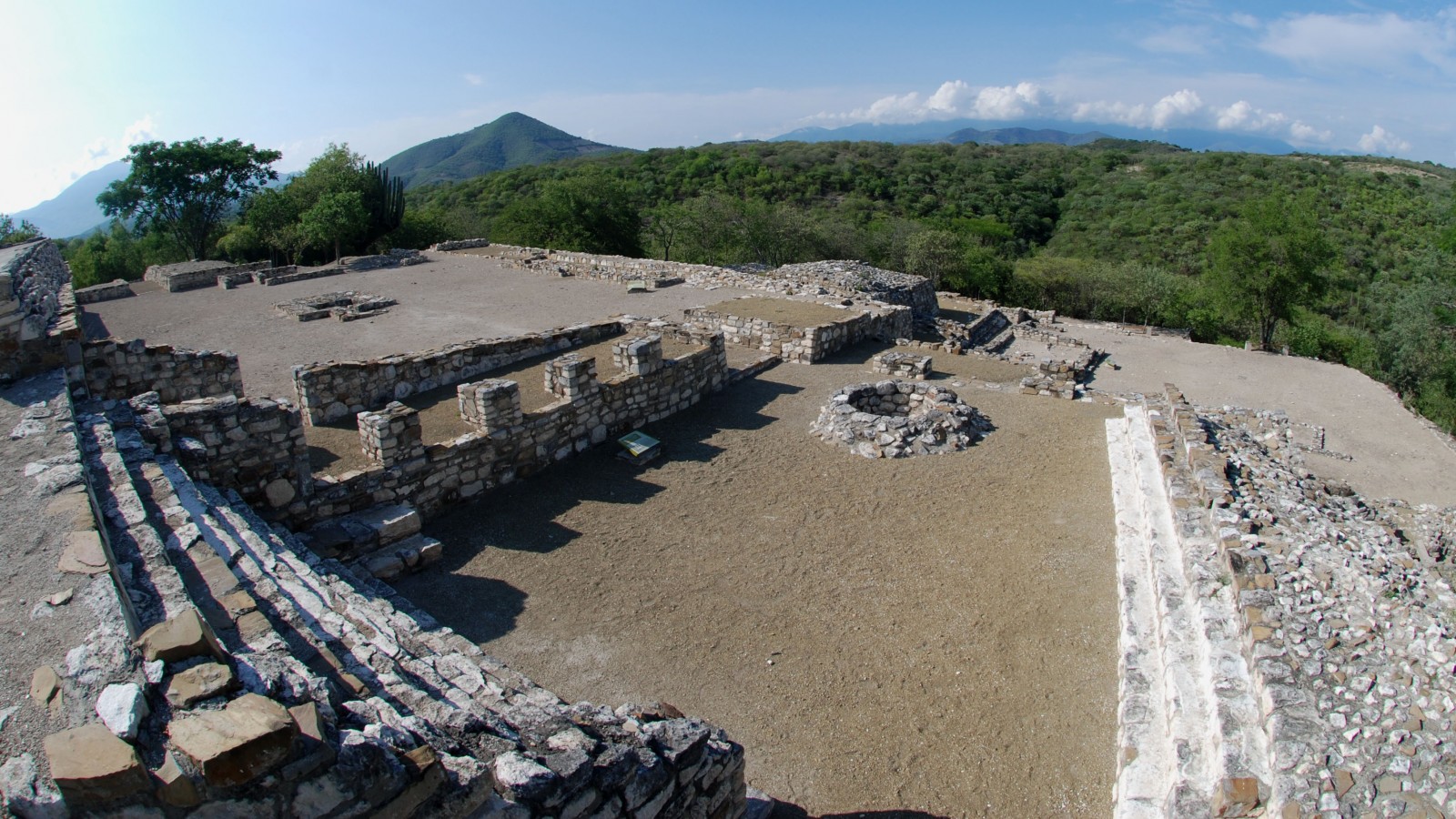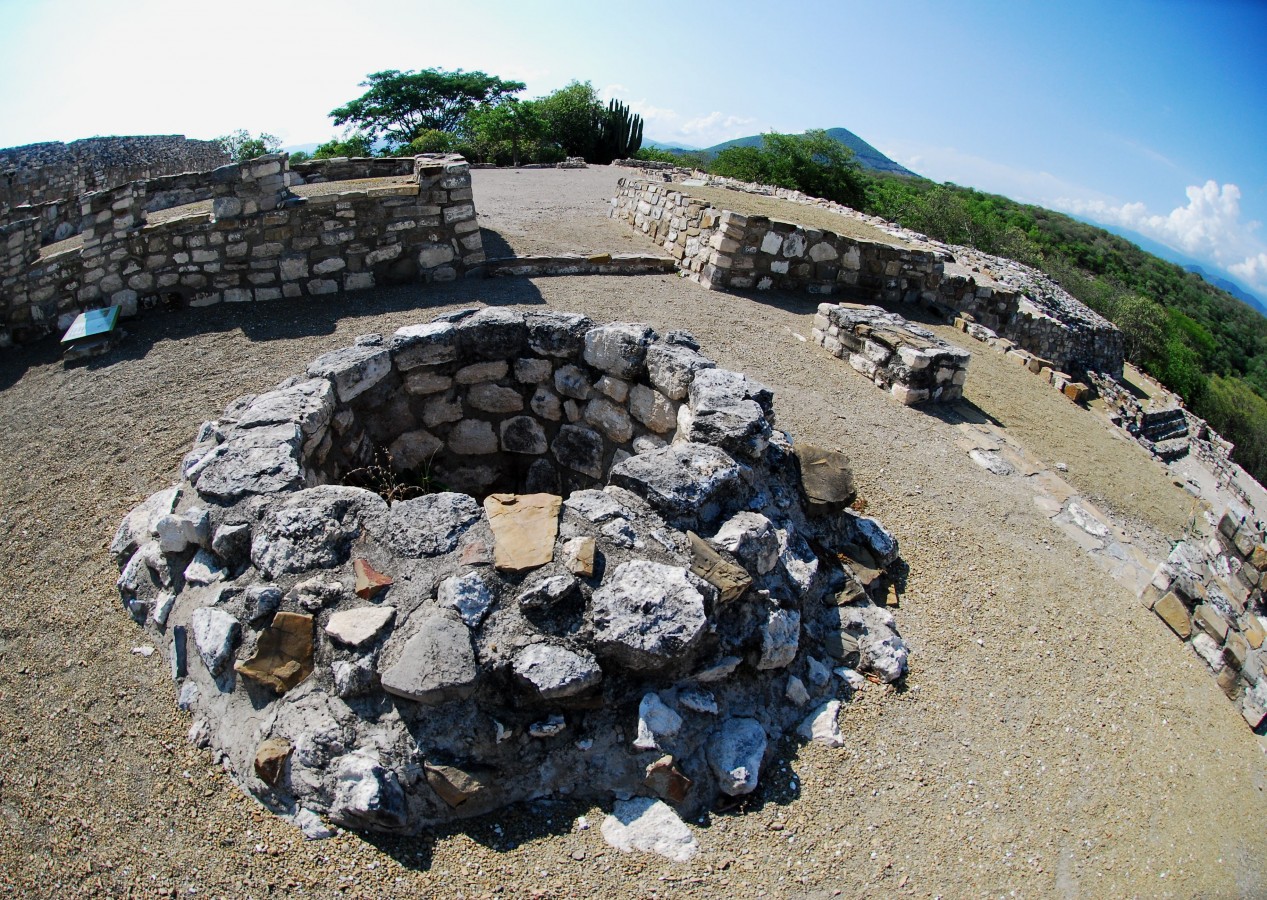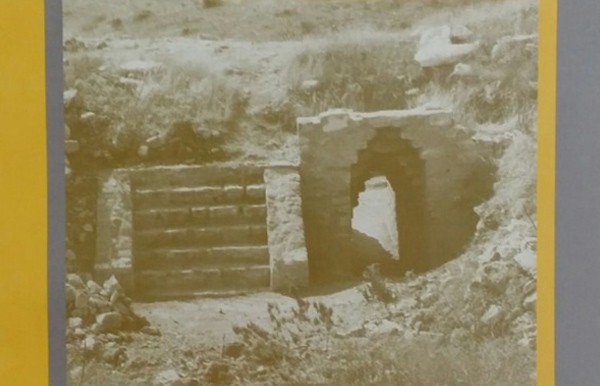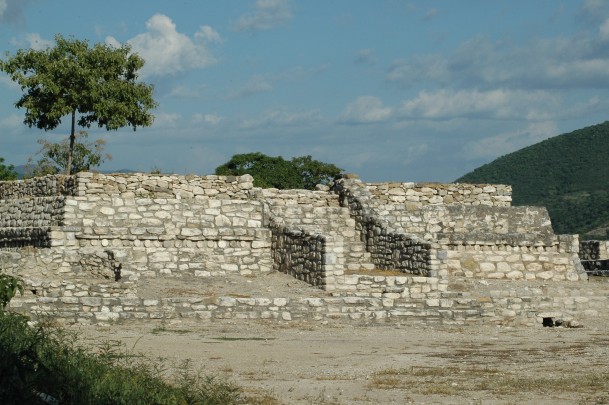Xochipala
The place of organ cacti
Famed for the mastery of its artisans who made extraordinary sculptures, masks, figures of animals and objects for rituals from jade and jadeite. It presents remarkable palace architecture and had the largest Mezcala culture population, in what is today the state of Guerrero.
About the site
During its apogee this site had an area of four and a half acres, and its buildings had an idiosyncratic architectural style. Some rooms and plinths are decorated with lines of circular stone pieces, known as studs; others are lined with a type of scapular panel, while still others are roofed with overhanging slabs (this system is known as a false vault).
La Organera-Xochipala emerged as a result of various factors, most important of which was territorial defense. Together with other contemporary sites, it protected the cultivated lands of the El Llano valley.
Five stages of construction have been identified in this ancient city, from the Early Classic to the Late Postclassic, although the causes of its neglect and decay are unknown. The palace architecture is notable, with porticoes and pilasters, and a circulation system adapted to the uneven terrain using stucco-covered staircases.
Experts have defined two ceramic traditions on the site. The first was in between the Tejas and Xaltipan phases corresponding to the Middle Preclassic (585 BC) and the Classic. The second, based on the Tepenacaxtla phase, was the Late Xochipala phase in the Early Postclassic (965), with a predominance of granular white ceramics.
La Organera-Xochipala emerged as a result of various factors, most important of which was territorial defense. Together with other contemporary sites, it protected the cultivated lands of the El Llano valley.
Five stages of construction have been identified in this ancient city, from the Early Classic to the Late Postclassic, although the causes of its neglect and decay are unknown. The palace architecture is notable, with porticoes and pilasters, and a circulation system adapted to the uneven terrain using stucco-covered staircases.
Experts have defined two ceramic traditions on the site. The first was in between the Tejas and Xaltipan phases corresponding to the Middle Preclassic (585 BC) and the Classic. The second, based on the Tepenacaxtla phase, was the Late Xochipala phase in the Early Postclassic (965), with a predominance of granular white ceramics.
Map
Did you know...
- The Mezcala culture to which La Organera-Xochipala belonged developed a strong sculptural style in which highly schematized animal and human forms were represented.
Practical information
Tuesday to Saturday from 09:00 to 16:00 hrs. Last entry 15:00 hrs.
Free entry
Tiene una sala introductoria.
Se localiza en las estribaciones de la Sierra Madre del Sur, en la parte central del estado de Guerrero.
From Mexico City, take Federal Highway 95 for Acapulco as far as Casa Verde junction (km 248). Continue on the road that leads to Xochipala, Filo de Caballos and Tlacotepec; travel 10 km to the beginning of a dirt road and continue 1 km further south, heading towards the spring of Xoxocoapa.
Services
-
+52 (747) 471 7121
-
This email address is being protected from spambots. You need JavaScript enabled to view it.
Directory
Jefe del Departamento de Protección y Resguardo de Bienes Culturales
Héctor Torres Calderón
This email address is being protected from spambots. You need JavaScript enabled to view it.
+52 (747) 472 2604
















